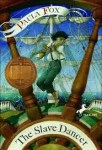 The boy hunched in an empty corner of the gym while the rest of the seventh and eight grade sprint-walked across the floor to join two Challenge Day leaders in an impromptu dance party. Everyone in the room vibrated with nervous energy and twittering laughter. Everyone except the boy in the corner.
The boy hunched in an empty corner of the gym while the rest of the seventh and eight grade sprint-walked across the floor to join two Challenge Day leaders in an impromptu dance party. Everyone in the room vibrated with nervous energy and twittering laughter. Everyone except the boy in the corner.
It was December and I was an adult volunteer for a six-hour, immersive Challenge Day experience at a local middle school. My job was simple: participate like everyone else and pay attention to any kids that might be slipping through the cracks.
Imagine a school where everyone feels safe, loved and celebrated. Imagine enemies finding common ground and making peace; friends healing past hurts and making amends; people igniting their passion for service and leadership; adults and youth working together to create a school where everyone is included and thrives. This is Challenge Day.
The first activities were mostly silly, racing to find a new seat if, as the Challenge Day leaders specified, “you were wearing clothes” or “woke up this morning.” All this racing around, interspersed with goofy dance moves, eased the tension in the room and shook up the normal social dynamics. Kids ended up seated next to people they didn’t know well. Everyone except the boy in the corner.
The program goes beyond traditional anti-bullying efforts, building empathy and inspiring a school-wide movement of compassion and positive change. We address some common issues seen in most schools including cliques, gossip, rumors, negative judgments, teasing, harassment, isolation, stereotypes, intolerance, racism, sexism, bullying, violence, suicide, homophobia, hopelessness, apathy, and hidden pressures to create an image, achieve or live up to the expectations of others.
Once they’d loosened up the crowd, the leaders shifted into more serious activities that unpacked different issues often found in middle school. All of this built to an intimate and intense small group activity just before lunch. In small circles of four, we took turns finishing these sentences:
If you knew me…
If you really knew me…
This far into the day, we were ready to open up. Each and every one of us in my group (which didn’t include the boy I was keeping an eye on) shared intense and personal things. We cried. We hugged. We supported. We were human in the very best way.
And we were hungry.
At lunch, we were asked to pair up with someone new. By the time I had my lunch bag, the boy in the corner was back in the corner. I don’t how he fared in his small group, but I decided that he was having lunch with me.
“Can I join you for lunch?”
He nodded.
“How’s it been going?”
He shrugged.
“That was pretty intense, huh?”
Another shrug. He wouldn’t look at me. I showed him a picture of my dog and gave him a piece of jerky. Eventually he told me about his cats and his siblings. We were human in the very best way.
Returning to the group, the leaders launched into an exercise called, “Cross the Line.” You’ve probably seen a version of it on Facebook. We began on one half of the room. The leaders asked us to cross over if we identified with a series of statements. Have you ever faced food insecurity? Are you or someone you love struggling with mental illness? Have you ever faced discrimination for your skin color? Your religion? Your sexuality?
After each statement, we were asked to send love to those who had crossed over, and if we had crossed over, we were asked to notice how many were standing with us. Tears streamed down our faces. We held each other. No one was ever alone. Not even the boy in the corner, and my lunch companion crossed many times: foster care, divorce, incarceration, suicide, bullying… These were his challenges. These and more.
At the very end of the day, we were invited to stand up and speak directly to others in the room. To apologize, to appreciate, to reach out, to connect, to commit to taking the lessons of Challenge Day into the rest of our lives.
I stood and took the mic and thanked my lunch friend for telling me about his cats.
***
For me, Challenge Day encompassed everything I love about the humans we call middle grade readers. They can be full of bluff and bluster, goof and gallantry. And sure, some of them, like my lunch friend, wear thick armor. But they can and do crack open in the most beautiful ways. They hold light even in the darkest circumstances, and they can be reached by the right teacher, the right librarian, the right book.
I hope you will consider learning more about Challenge Day. You could bring a program to your school. You could volunteer like I did. The experience affected me deeply, and it reminded me of exactly why I write the books I do. I write them for the boy in the corner.







